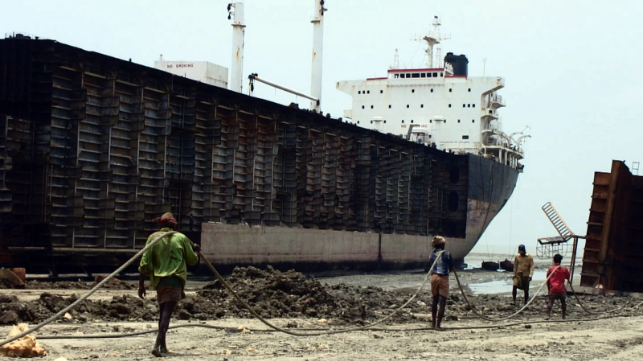BIMCO: Second-Hand Prices for Crude Oil Tanker Stalls Demolitions

Despite low freight rates, very few crude oil tankers have been sent for demolition so far this year. In a new analysis of market trends, BIMCO reports that it expects shipowners will continue to seek opportunities in the secondhand market as opposed to scrapping ships and reducing overall capacity in the second.
With a difficult rate market and few prospects for a near-term recovery, the speculation hard turned to a possible new wave of scrapping to reduce capacity in the crude oil tanker segment. Pointing to data from Clarkson, BIMCO acknowledges that demolitions are up from the start of last year but overall says that the second-hand market is winning out.
Clarksons’ data shows that only two shuttle tankers and two Aframax crude oil carriers have been confirmed demolished in the first two months of 2021. This is significantly down from the 1.1m DWT of crude oil tanker capacity that left the market in December 2020.
“Despite the widely disappointing crude oil tanker freight rates at the start of 2021, owners appear to be in no hurry to reduce the cargo carrying capacity in the market by selling ships for demolition,” says BIMCO’s Chief Shipping Analyst, Peter Sand. "The attractiveness of scrap steel prices around USD 450 per ltd. offered by breaker yard on the Indian sub-continent, easily vanish when compared to USD 24.5 million being paid for a 2002-built VLCC in the second-hand market.”
Sand says that while the perception is that demolition volumes rise when freight rates fall, it is not always that simple. Earnings must remain in the doldrums for an extended period before demolition activity picks up significantly, he explains.
For instance, in Q4 2014 through Q1 2016, tanker freight rates enjoyed high levels on the back of a sharp decline in oil prices during Q4 2014 to Q1 2015, but when tanker freight rates started to drop after Q1 2016, it took around five quarters for scrapping activity to pick up in July 2017.
Part of what is supporting the market currently is the fact that a lot of money was made before the most recent decline in rates. The most significant difference that BIMCO sees in the market currently has to do with demand.
“We currently observe two opposing future trends, both of which will steadily impact tanker trade lanes,” says Sand. “Where non-OECD nations (mainly India, China, and South East Asia) are rapidly heading towards a pre-pandemic level of oil demand, OECD nations, on the other hand, are on a very different track as the US is now joining Europe and Japan on a trend of a decline in the demand for oil.”
Traditionally, demolitions also rise in the spring after the end of the winter peak demand for oil. BIMCO forecasts that the traditional seasonality will not be an issue instead believing as long as the second-hand market remains strong demolitions will continue to be deferred.
